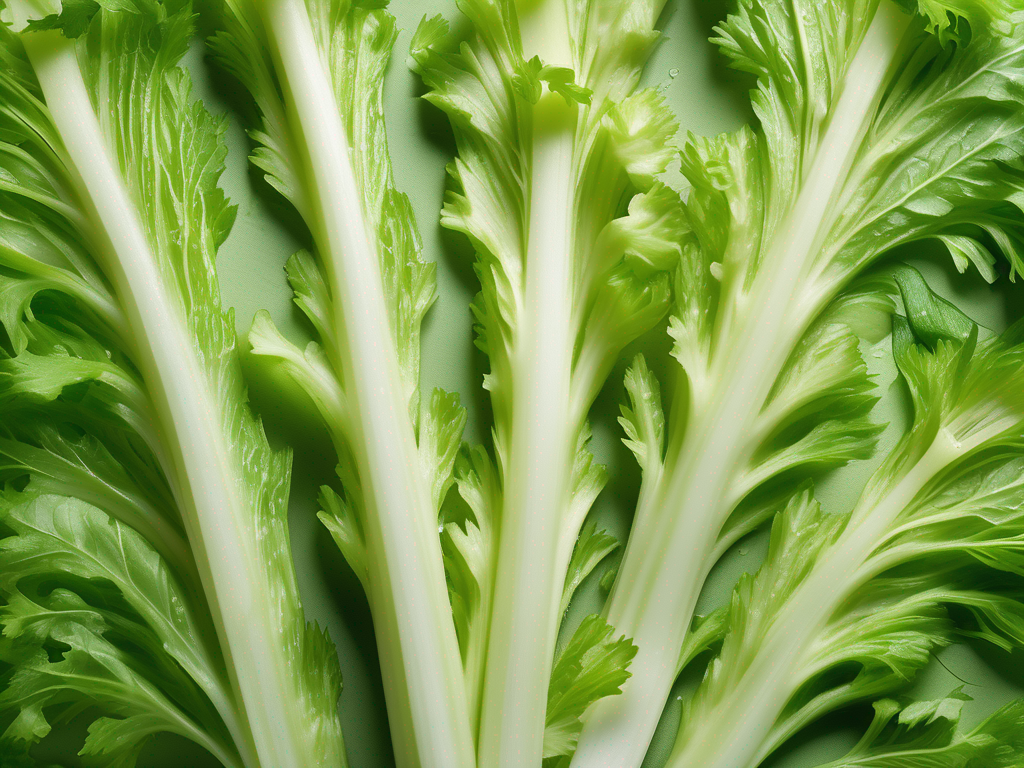
Preserving the Freshness of Celery Leaves for Weeks
Stop Wasting €1,500+ Per Year on Food You Think is Expired
Get our 16-page guide with exact timelines for 70+ foods. Know instantly what's safe to eat—no more guessing.
Preserving the Freshness of Celery Leaves for Weeks
Celery leaves are a versatile ingredient that can add a burst of flavor and freshness to your dishes. However, keeping them fresh for an extended period can be a challenge. In this blog post, we will explore some practical tips and techniques to help you preserve the freshness of celery leaves for weeks. (Celery leaves)
Understanding the Importance of Proper Storage
Proper storage is crucial in maintaining the freshness and flavor of celery leaves. When stored correctly, celery leaves can last for weeks without losing their crisp texture and vibrant green color. Here are some key factors to consider when storing celery leaves:
Temperature
Temperature plays a significant role in the shelf life of celery leaves. Storing them at the right temperature can help slow down the rate of deterioration. Ideally, celery leaves should be stored in a cool environment to prevent wilting and browning.
Moisture
Celery leaves are prone to wilting when exposed to excess moisture. It is essential to strike a balance between maintaining adequate moisture levels to prevent drying out and avoiding excess moisture that can lead to spoilage.
Air Circulation
Proper air circulation is crucial for keeping celery leaves fresh. Storing them in a well-ventilated area can help prevent the buildup of ethylene gas, which accelerates the ripening process.
Tips for Preserving Celery Leaves
Now that we understand the importance of proper storage, let's explore some practical tips for preserving celery leaves for weeks:
1. Wash and Dry Thoroughly
Before storing celery leaves, make sure to wash them thoroughly to remove any dirt or debris. Pat them dry with a clean paper towel to remove excess moisture, as dampness can promote mold growth.
2. Store in a Container
Place the celery leaves in an airtight container to protect them from moisture and air exposure. You can use a resealable plastic bag or airtight container lined with a paper towel to absorb excess moisture.
3. Refrigerate Properly
Store the container of celery leaves in the crisper drawer of the refrigerator, where the temperature is slightly lower and humidity levels are higher. Avoid storing them near fruits that release ethylene gas, as it can speed up the ripening process.
4. Change the Paper Towel Regularly
If you choose to line the container with a paper towel, make sure to change it regularly to prevent the buildup of moisture. A damp paper towel can promote mold growth and spoilage.
5. Refresh as Needed
If you notice the celery leaves starting to wilt, you can refresh them by soaking them in ice water for a few minutes. This can help revive their crispness and extend their shelf life.
Safety Precautions
While preserving celery leaves, it is essential to follow safety precautions to ensure that they remain safe for consumption:
-
Check for Signs of Spoilage: Before using celery leaves, inspect them for any signs of mold, sliminess, or off odors. Discard any leaves that appear spoiled.
-
Practice Good Hygiene: Wash your hands thoroughly before handling celery leaves to prevent the transfer of bacteria and contaminants.
-
Avoid Cross-Contamination: Store celery leaves away from raw meat, poultry, and seafood to prevent cross-contamination and foodborne illnesses.
Conclusion
By following these practical tips and safety precautions, you can extend the freshness of celery leaves and enjoy their flavor in your dishes for weeks. Proper storage, temperature control, and good hygiene practices are key to preserving the quality of celery leaves. Incorporate these tips into your routine to make the most of this versatile ingredient. [Learn more about celery leaves here.](/food/celery leaves) (Celery leaves)
Authoritative Food Safety References
These agencies and university labs inform every tip and health precaution we publish.
USDA FoodKeeper – Cold Storage Guidelines
Official refrigerator, freezer, and pantry timelines maintained by the U.S. Department of Agriculture.
Visit USDA FoodKeeperFDA Produce Safety Rule & Grower Guidance
Field-to-fridge handling practices that prevent contamination of fruits, vegetables, and leafy greens.
Visit FDA Produce SafetyCDC Foodborne Illness Prevention Hub
Surveillance-backed guidance on pathogens, symptoms, and steps to reduce foodborne illness risk.
Visit CDC Food SafetyUC Davis Postharvest Technology Center
University research detailing optimal storage atmospheres for produce after harvest.
Visit UC Davis PostharvestPenn State Extension – Home Food Preservation & Safety
Peer-reviewed extension bulletins on safe canning, chilling, and reheating practices.
Visit Penn State ExtensionStop Wasting €1,500+ Per Year on Food You Think is Expired
Get our 16-page guide with exact timelines for 70+ foods, 15 real-world scenarios, and troubleshooting tips. Know instantly what's safe to eat—no more guessing or Googling.
Scan your food directly and get instant safety info using our AI-powered camera feature.